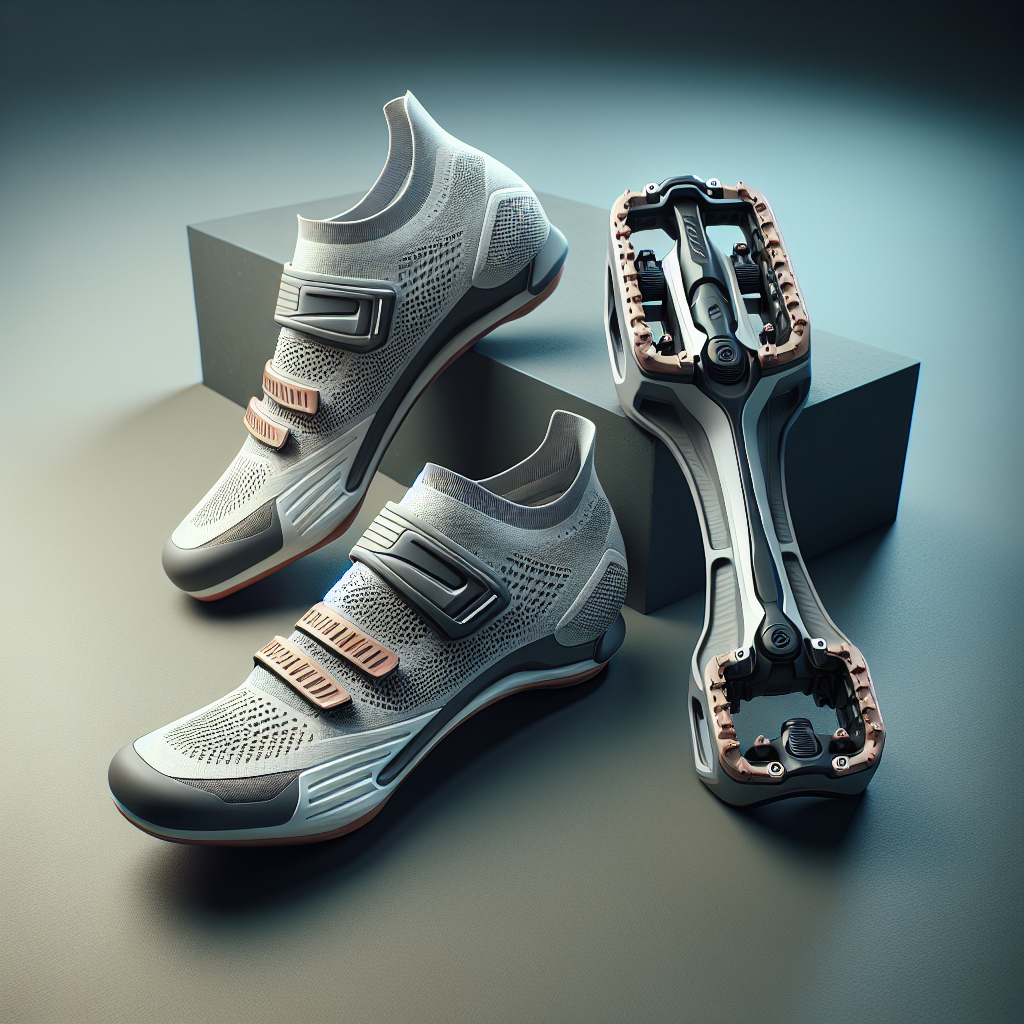
Choosing the right pair of cycling shoes is crucial for maximizing performance and comfort on the bike. Whether you’re a seasoned cyclist or a beginner, understanding the different types of cycling shoes and how they interact with various pedal systems can make a significant difference in your riding experience.
Understanding Cycling Shoes
Cycling shoes are designed to enhance the efficiency of your pedaling by providing a stiff sole that allows for better power transfer from your legs to the pedals. Unlike regular athletic shoes, cycling shoes are specifically engineered to work with clipless pedal systems, which secure your feet to the pedals for improved control and stability.
Types of Cycling Shoes
There are several types of cycling shoes, each tailored to different styles of riding:
- Road Cycling Shoes: These shoes are designed for road cycling and feature a stiff sole for maximum power transfer. They typically have a three-bolt cleat system that is compatible with most road pedals.
- Mountain Biking Shoes: Mountain biking shoes are more rugged and often have a two-bolt cleat system. They provide better traction for walking on rough terrain and are designed to withstand the demands of off-road riding.
- Triathlon Shoes: Triathlon shoes are similar to road cycling shoes but are designed for quick transitions. They often have a single strap or a quick-release system to make it easier to get in and out of the shoes quickly.
- Commuter and Casual Cycling Shoes: These shoes are designed for everyday use and often look more like regular sneakers. They may have recessed cleats for easier walking and are suitable for casual riding and commuting.
Choosing the Right Pedal System
The pedal system you choose will influence the type of cycling shoes you need. There are several common pedal systems, each with its own advantages and compatibility considerations.
Clipless Pedal Systems
Clipless pedals are the most popular choice among serious cyclists. Despite the name, clipless pedals actually involve clipping your shoes into the pedals using cleats. This system provides a secure connection between your foot and the pedal, allowing for more efficient power transfer and better control.
- SPD (Shimano Pedaling Dynamics): SPD pedals are commonly used in mountain biking and commuting. They use a two-bolt cleat system and are known for their durability and ease of use.
- SPD-SL: SPD-SL pedals are designed for road cycling and use a three-bolt cleat system. They offer a larger contact area for better power transfer and stability.
- Look Keo: Look Keo pedals are another popular choice for road cyclists. They also use a three-bolt cleat system and are known for their lightweight design and excellent power transfer.
- Speedplay: Speedplay pedals are unique in that they use a four-bolt cleat system. They offer a high degree of adjustability and are favored by some cyclists for their low stack height and ease of entry and exit.
Flat Pedals
Flat pedals are a common choice for casual riders, commuters, and mountain bikers who prefer the freedom to quickly put their foot down. They do not require special shoes or cleats, making them a versatile option for various types of riding.
Factors to Consider When Choosing Cycling Shoes
When selecting cycling shoes, there are several factors to consider to ensure you get the best fit and performance for your needs.
Fit and Comfort
The fit of your cycling shoes is crucial for comfort and performance. Shoes that are too tight can cause discomfort and restrict blood flow, while shoes that are too loose can lead to inefficient pedaling and foot movement. Look for shoes that offer a snug fit without being overly tight, and consider trying on multiple sizes and brands to find the best fit for your feet.
Stiffness
The stiffness of the sole is an important factor in cycling shoes. A stiffer sole provides better power transfer, allowing you to pedal more efficiently. However, extremely stiff soles can be uncomfortable for long rides or walking. Consider the type of riding you do and choose a shoe with an appropriate level of stiffness for your needs.
Ventilation
Good ventilation is important for keeping your feet cool and dry during rides. Look for shoes with breathable materials and mesh panels to allow for airflow. This is especially important for long rides and hot weather conditions.
Closure Systems
Cycling shoes come with various closure systems, including laces, Velcro straps, ratcheting buckles, and BOA dials. Each system has its own advantages and disadvantages:
- Laces: Laces provide a customizable fit and are often found on casual and commuter shoes. However, they can be difficult to adjust on the fly.
- Velcro Straps: Velcro straps are easy to adjust and provide a secure fit. They are commonly used on entry-level and mid-range cycling shoes.
- Ratcheting Buckles: Ratcheting buckles offer a precise fit and are often found on high-performance cycling shoes. They can be adjusted quickly and easily during rides.
- BOA Dials: BOA dials provide a highly adjustable and secure fit. They use a dial system to tighten and loosen the shoes, allowing for quick and precise adjustments.
Conclusion
Choosing the right pair of cycling shoes is essential for enhancing your riding experience. By understanding the different types of cycling shoes and pedal systems, and considering factors such as fit, stiffness, ventilation, and closure systems, you can find the perfect pair of shoes to match your needs and improve your performance on the bike. Whether you’re a road cyclist, mountain biker, triathlete, or casual rider, the right cycling shoes can make all the difference in your comfort and efficiency.

